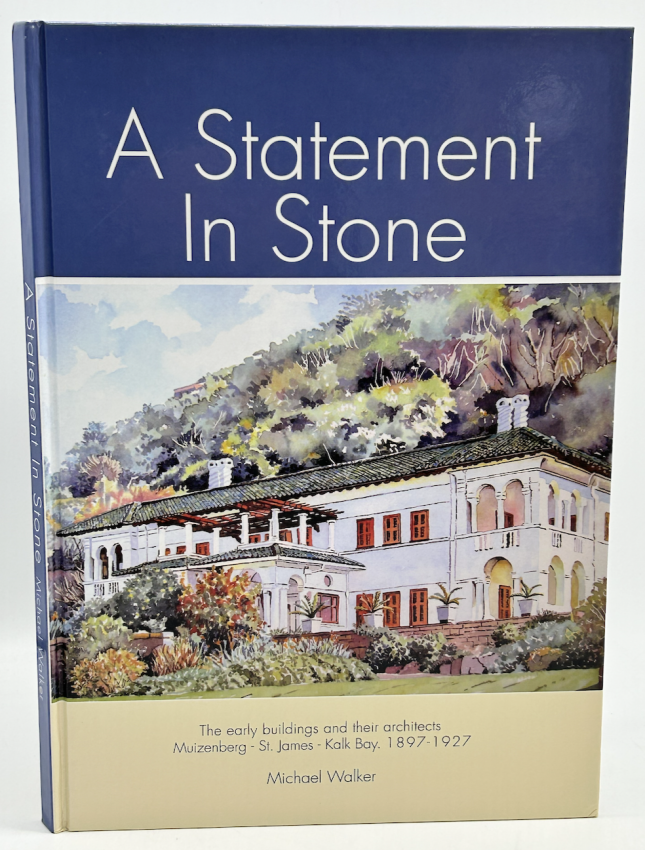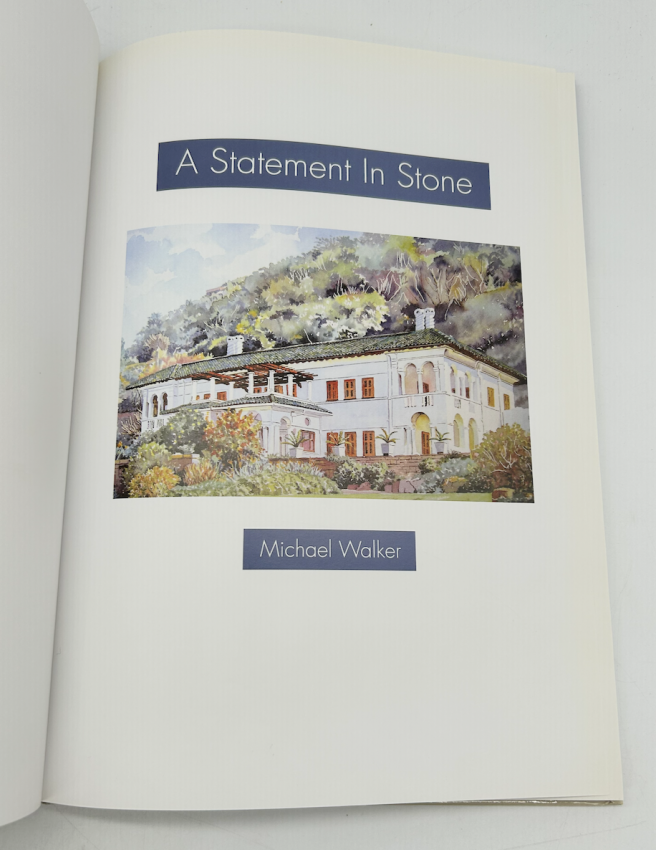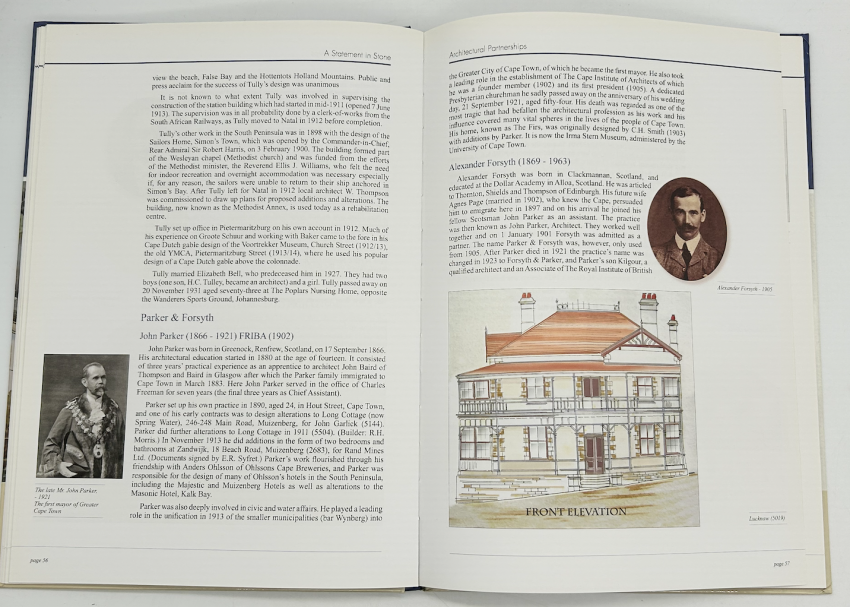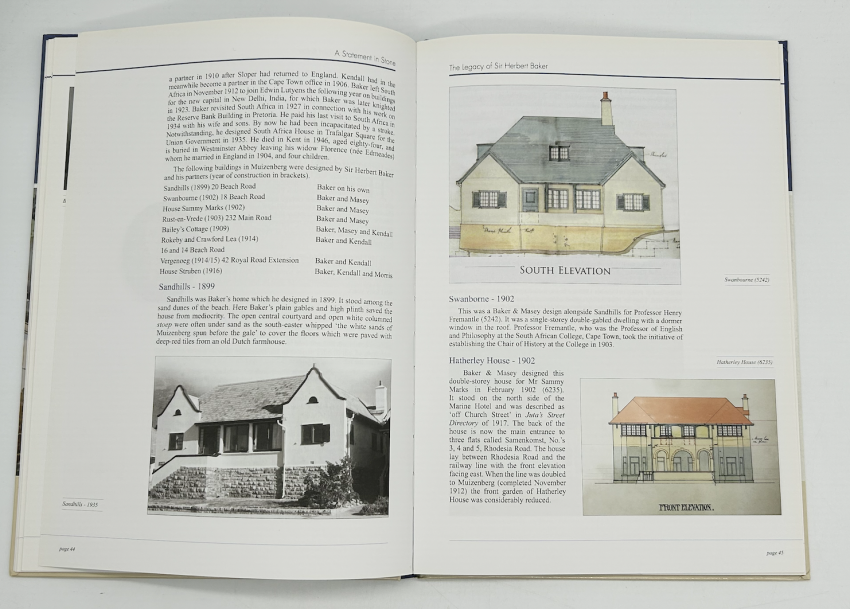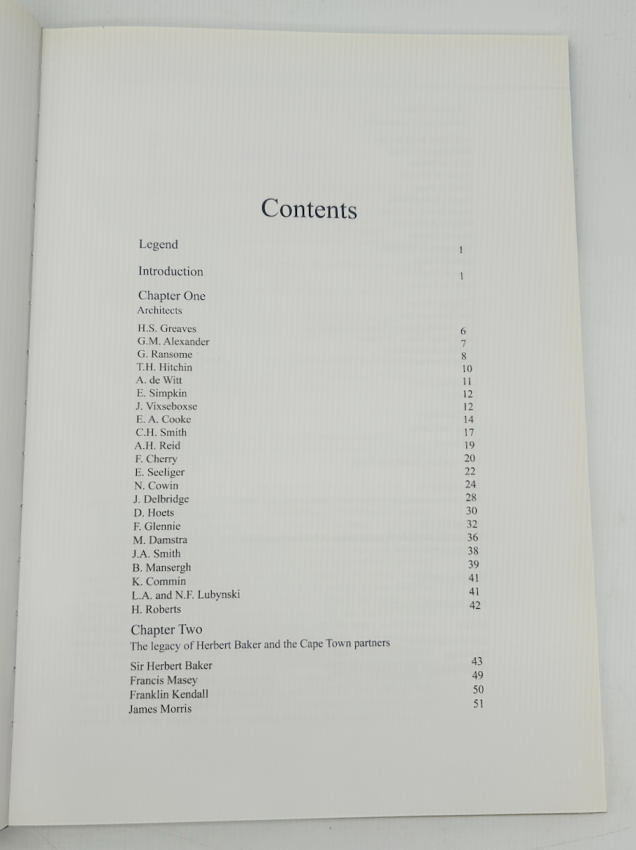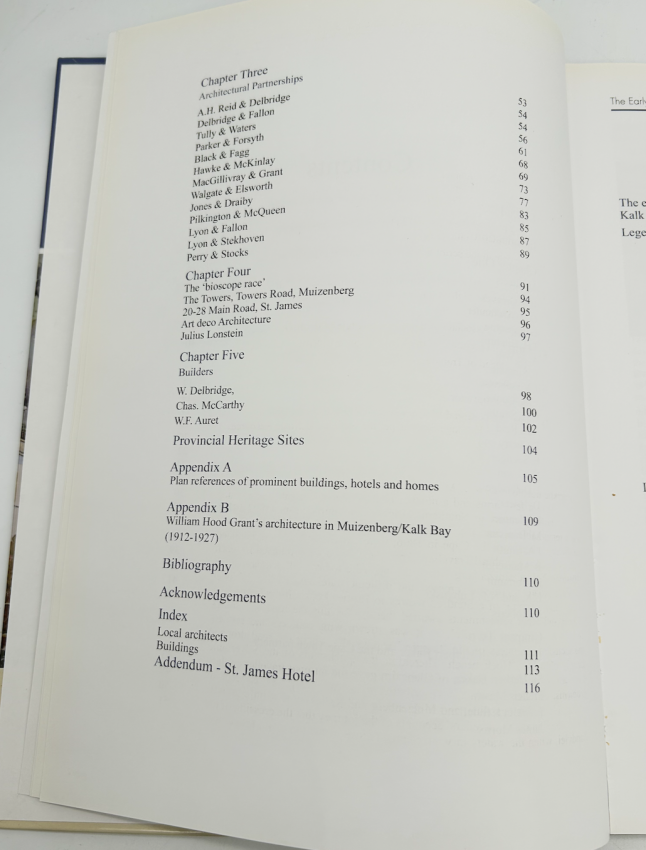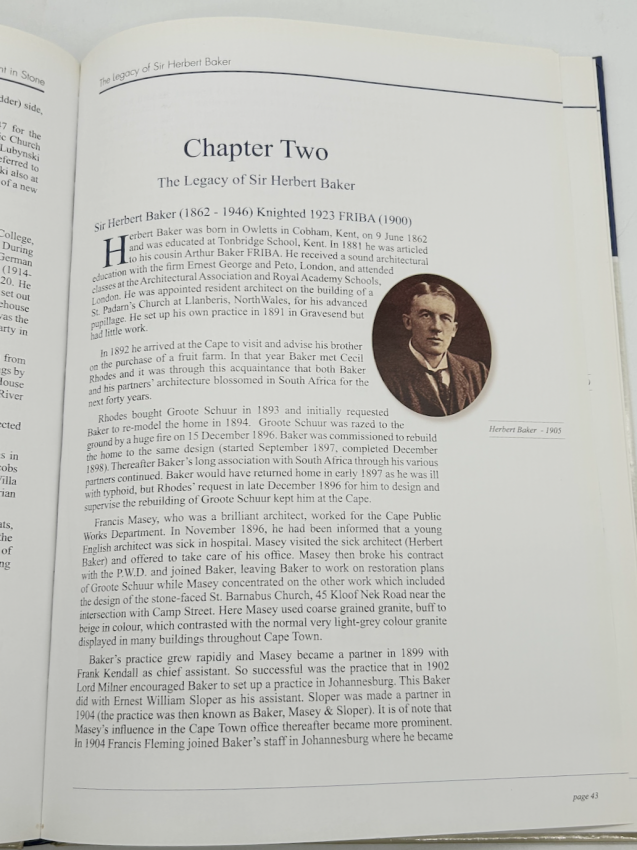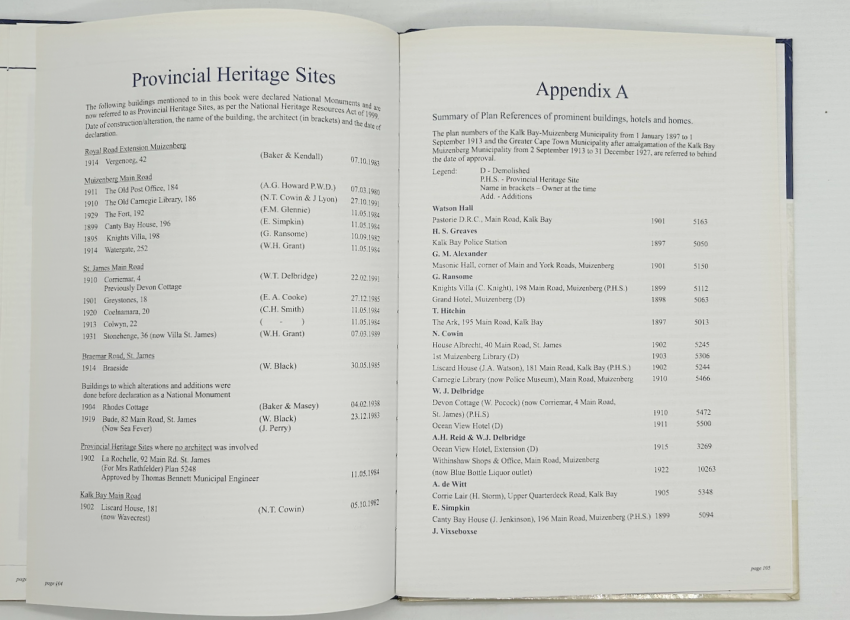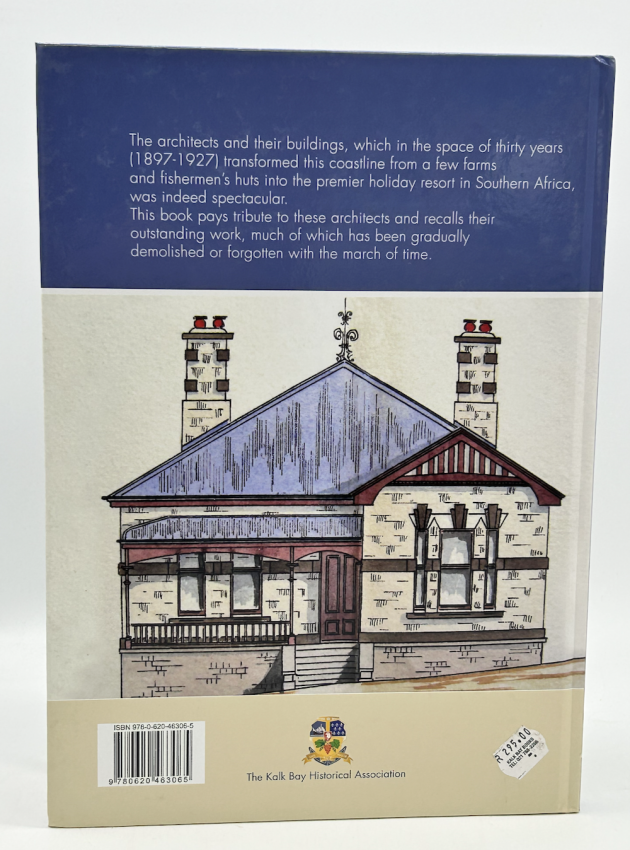117 pages. Many photographs and illustrations, building plans - mostly in colour. Pictorial boards in good condition.
Back cover:
The architects and their buildings, which in the space of thirty years (1897-1927) transformed this coastline from a few farms and fishermen's huts into the premier holiday resort in Southern Africa, was indeed spectacular.
This book pays tribute to these architects and recalls their outstanding work, much of which has been gradually demolished or forgotten with the march of time.
Kathy Munro Review in The Heritage Portal:
This book surveys the early buildings and their architects of Muizenberg, St James and Kalk Bay (1897 to 1927) as civic organisation, order and planning were imposed on the coastline and the steep slopes above the Main Road. This is the most substantial of the three books and is a hardbound, large format volume. The illustrations are a particular delight as they are drawn from postcards, photographs and the original architects’ plans and drawings. Reproduction of many beautiful water colour drawings are of elevations from the plans submitted for approval to the town councils, and capture bygone fanciful styles for modest cottage homes, churches, grand seaside holiday and retirement mansions, villas, hotels, pavilions and even cinemas. There was a mix of the public and the domestic, the civic and the commercial. Most wealthy leisured people came to False Bay to spend their money that had been made elsewhere in South Africa as they commissioned retirement homes, gracious mansions and simpler holiday cottages. But local commercial and business interest capitalized on the need for hotels, apartment blocks , cinemas and shops. Civic pride began to emerge in schools and churches.
In this book Walker establishes the format of presenting the particular architect and his principal works in the three small towns together with the illustrations of the particular villa, hotel or church. There is a chapter on Sir Herbert Baker and on the Baker partners in the Cape Town office. The importance of architectural partnerships is indicated but the significance of the structure of the architectural practice and a collaborative approach in design is not examined in a critical manner. Apart from mortality, why did architectural partnerships come and go, what made for success in a partnership and what was the balance between talent and financial management in an enduring partnership. The book does have a strong local history bent, as the work concentrates on the legacy of these architects in the Cape peninsula.
https://www.theheritageportal.co.za/review/statement-stone
- Binding Condition: Very good
- Overall Condition: Very good
- Size: 4to (300 x 215 mm)

